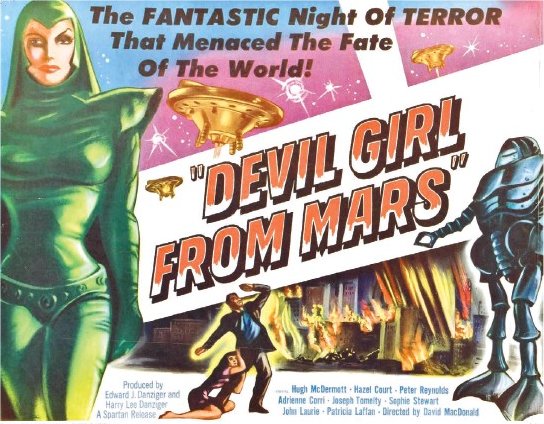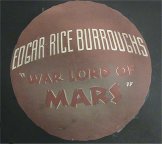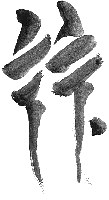MARS ATTRACTS!
National Post ~ March
13, 2012 ~ Scott Van Wynsberghe
As John Carter plays in the theatres,
Scott Van Wynsberghe steps readers through 135 years of Red-planet
mania.

Mars, the most obsessed-about extraterrestrial body in the universe,
has come our way again. On March 9, Hollywood unveiled John Carter,
the first film adaptation of a famous series of Martian adventures written
by Edgar Rice Burroughs, better known as the creator of the jungle
hero Tarzan. Burroughs's Martian yarns act as a portal to 135 years of
cultural history that really is out of this world.

Devil Girl from Mars
A black and white 1954 British science fiction film,
directed by David Macdonald.
It was adapated from a stage play and became a cult
favourite.
The bizarre story of humanity's modern entanglement with the Red Planet
began in 1877, when Italian astronomer Giovanni Schiaparelli reported
the existence of “canali” on the Martian surface. In Italian, that word
can mean both "channels," which are natural formations, and "canals," which
are not. According to science writer John Noble Wilford, that ambiguity
was never cleared up.
The chance that there was somebody out there to build canals was not
lost on the public. In 1880, British writer Percy Greg brought out
the novel Across the Zodiac, which tells of a man who builds a spaceship,
visits Mars and finds an ancient civilization.
Although creaky and eccentric, Across the Zodiac is still recognizable
as science fiction. But other more obscure literary movements were just
as active at that time. Robert Crossley, an expert on Martian writings,
has highlighted Henry Gaston’s occult book Mars Revealed
(also 1880), which unveiled visions of Mars supposedly obtained through
contact with a spirit. Crossley tracked this strain of Martian mysticism
as far as 1938, when C.S. Lewis (of Narnia fame) issued his novel
Out
of the Silent Planet.
Caught between science fiction and the supernatural, actual scientists
were in trouble. French astronomer Camille Flammarion, for example,
alternately wrote about Mars and reincarnation (1889) and Mars and science
(1892). In 1900, the inventor Nikola Tesla announced that he had
monitored transmissions from either Mars or Venus, but he was jeered (biographer
Margaret
Cheney thinks he was just detecting natural electromagnetic patterns
in space). In 1921, radio pioneer Guglielmo Marconi thought he had
received a signal from Mars, but that, too, went nowhere. The biggest offender,
however, was American astronomer Percival Lowell.
In 1895, Lowell released the first of a series of books proclaiming
that Mars was inhabited. The canali, he said, really were canals, supporting
a civilization struggling to survive on a dying globe. Although rightly
scorned by other astronomers, Lowell was a superb writer and a frequent
lecturer — Robert Goddard, the father of American rocketry, heard
him speak — so his message spread. (And, in a way, it is still spreading:
Think of that recent, muchdebunked conspiracy theory about a giant, sculpted
face on the Martian surface.)
After Lowells's proclamation, a Martian storm struck. In 1897, German
writer Kurd Lasswitz brought out the novel Two Planets, which
remains obscure in the English-speaking world — it was not translated into
English until 1971 — but was very influential. The book, which depicts
the complex, sometimes violent, first contact between Martians and humans,
motivated a generation of German rocketry enthusiasts, including Wernher
von Braun, who went on to build missiles for the Nazis and then was
used by the U.S. space agency NASA to put a man on the moon in the 1960s.
1897 also witnessed the magazine serialization of what remains the best-known
Martian novel, The War of the Worlds, by H.G. Wells. This
narrative describes a Martian invasion that almost exterminates humanity
and is stopped only by terrestrial germs deadly to the Martians. The yarn
was so popular in its day that it was extensively pirated in the United
States, where one newspaper even commissioned an unauthorized sequel, written
by one Garrett P. Serviss. (The aforementioned rocketry guru Robert
Goddard later rhapsodized about both the original novel and Serviss’s
knock-off.)
Wells's book would spawn two movies (released in 1952 and 2005), a TV
show (19881990) and the notorious 1938 radio play by Orson Welles. The
latter production was not a deliberate hoax — there was actually a commercial
break halfway through — but it was so intense that it sparked hysteria
in parts of the United States. (In fairness, a 2001 volume edited by Brian
Holmsten and Alex Lubertozzi points out that some of the panickers
thought what really was happening was a German or Japanese attack.) A 1975
TV movie dramatized the embarrassing event.
Ironically, one person who would claim ignorance of The War of the
Worlds was none other than Edgar Rice Burroughs. Born in 1875,
Burroughs wandered through his first 36 years, drifting from mundane military
service to dead-end jobs. Exactly what drew him to Mars is unknown. One
biographer, Richard Lupoff, has suggested a 1905 Martian novel by
Edwin
L. Arnold, but Bill Hillman, co-creator of the invaluable
Erbzine
website, is skeptical. In fact, both Hillman and a second biographer, John
Taliaferro, have settled on Percival Lowell himself as the likeliest inspiration.
(Hillman also points out that Burroughs suffered a surprising number of
concussions during his life, causing vivid nightmares and hallucinations
that may have played a role.)
Whatever the source, Burroughs's first novel, Under the Moons of
Mars, was serialized in a magazine called The All-Story beginning
in February 1912 — a century ago last month. (Published in book form in
1917, it was retitled A Princess of Mars.) The story is about John
Carter, a dashing U.S. cavalryman who finds himself transported to Mars
through a means so mysterious as to remind one of all those occult Martian
books. Carter visits the famous canals, battles monsters and wins the heart
of a beautiful, egg-laying princess (seriously). In all, Burroughs wrote
almost a dozen colourful Martian novels — the first three are the best
— and they remain in print today. Fittingly, a Martian crater is now named
for him.
One young fan of Burroughs’s escapism was Ray Bradbury. In the
introduction to a 1975 biography of Burroughs by Irwin Porges, he
would recall his boyhood obsession with John Carter. In the 1940s, Bradbury
began writing his own Martian tales, many of which were collected into
the 1951 volume The Martian Chronicles, one of the most-honoured
books in science fiction. Bradbury’s Mars — a poetically surreal place
that exposed human folly — was a far cry from John Carter's Mars, but it
might not have come into being without Burroughs.
Alas, while Bradbury helped open up Mars to different interpretations
— thus clearing the way for dozens of authors in the decades to come, from
Philip
K. Dick to Kim Stanley Robinson — his achievement was overshadowed
by Hollywood. Movies about Mars date back to at least 1913, when the stage
play "A Message From Mars" was filmed. A few more pictures appeared up
to the 1940s, but the 1950s started a phenomenon. "Flight to Mars" (1951),
"Invaders From Mars" (1953), "Devil Girl From Mars" (1954) and others all
begat "Mars Needs Women" (1967), "Capricorn One" (featuring yet another
conspiracy theory; 1977), "Lobster Man From Mars" (a send-up of bad Martian
movies; 1989), "Mars Attacks!" (inspired by 1960s bubblegum cards; 1996),
"Red Planet" (2000) and more.
Of course, all the above hinged on the possibility of life on Mars.
But, in the 1960s, unmanned spacecraft from Earth found an apparent wasteland
there, not canals. Many astronomers refused to give up, however, and some
of them were steeped in Martian lore. According to biographer William
Poundstone, Carl Sagan consumed the John Carter sagas as a boy.
William
K. Hartmann, meanwhile, has called Ray Bradbury his “childhood hero.”
Both men helped with NASA’S Mariner 9 probe of Mars in 1971-1972, Sagan
assisted the 1976 Viking mission and Hartmann was part of the team running
the Mars Global Surveyor, which became operational in 1997.
Their efforts led to subsequent forays that have brought us tantalizingly
close to some sort of breakthrough. In 2011, NASA revealed that the Mars
Reconnaissance Orbiter, which started work in 2006, had located 21 sites
where water may be flowing freely, after all. Because water often means
life, our strange Martian dream continues.
Scott Van Wynsberghe lives in Winnipeg, which has no
canals either
©2012
National Post
.
MEET SCOTT VAN WYNSBERGHE
I was born in Winnipeg in 1958 and,
with one interruption, have lived there ever since. As a freelance writer,
I have specialized in historical topics and popular culture. An avid book
collector, I now have almost 10,000 volumes, which is way too much. And
yes, I read Burroughs as a boy. I still remember specifying to my mother
that I just had to have "Tarzan at the Earth's Core" for Christmas. (She
found it, too -- although it was the Ballantine pocketbook edition, not
the Ace version with the Frazetta cover, which is what I really wanted,
darn it.)
|






 .
.
